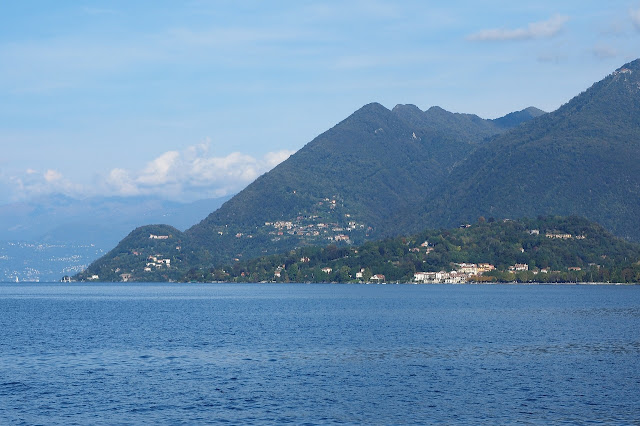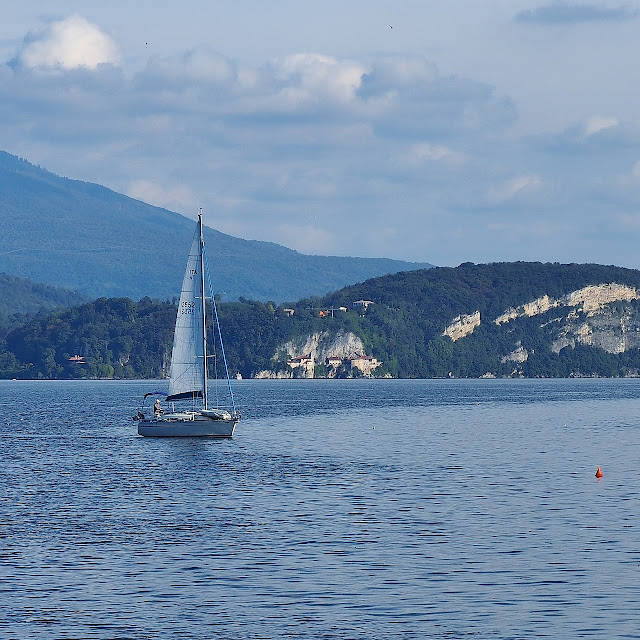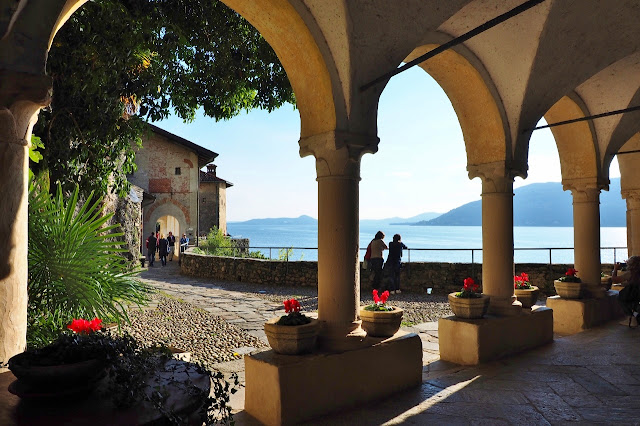Back to last October and Stresa (my previous post here) from
where we took a ferry across Lago
Maggiore to the hermitage of Santa
Caterina del Sasso, Saint Catherine of the Rock.
The hermitage is perched in the middle of a
cliff clinging to it 18m above water level like a terrace carved in stone.
Because of its unusual location it is only visible from the lake.
The sanctuary used to be accessible only by
climbing about 60 steps from the lake or by descending a stairway of 51m or
some 270 steps winding down the side of the cliff. Today, you can also take a
less troublesome way to the site by an elevator that was dug into the rock a
few years ago.
Needless to say, there is a singular legend
behind a historical catholic shrine at such a spectacular location. According
to it, a merchant by the name of Alberto Besozzi was shipwrecked in the region in
the 12th century. He prayed to Saint Catherine of Alexandria – an early martyr who
was one of the most popular saints in the late Middle Ages – vowing to dedicate the rest
of his life to worship if he were saved. A wave washed him to a rock and he
fulfilled his promise living the rest of his life at the location as a hermit.
Alberto had a simple chapel built to Saint
Catherine. After his death in 1205, people continued to visit the place for
prayer. The monastery with two more chapels – Santa Maria Nova and San Nicola –
was built in the late 13th and early 14th centuries. The first residents were
Dominicans, followed by more than 350 years of Ambrosians and finally
Carmelites until the last brothers had to leave under suppression in 1770.

All through the following century, the hermitage was abandoned and almost lost to ruins until it was declared a national monument in 1914. Its current owners, the Lombardian Province of Varese, finally opened it to the public in 1986 after a period of extensive restoration.
However, nothing could ever beat the spectacular location anyway. Compared with the natural beauty outside, the inside of the church is just too much to take in. You are bound to return to the courtyard sooner rather than later to admire the magnificent setting and the panoramic lake views. They will outbalance everything else there is to see at the hermitage for sure. Bellissimi!






































It is incredible to think of the work involved in building in such difficult conditions and without any of the modern tools and conveniences that we have available. A beautiful building in a an incredible setting! xx
ReplyDeleteIt is amazing, isn't it!
DeleteOh, this place takes my breath away! Love the extraordinary views and the beautiful art inside this incredible sanctuary. It must have been amazing to experience.....Love all your photos in this post and the last! x Karen
ReplyDeleteThanks, Karen. I would have liked to climb to the top of the cliff for the views but as usual we set off a bit too late in the afternoon so there was no time for that. A great experience nonetheless.
DeleteIt is such a stunning location and the views from between the arches is superb! Thank goodness the buildings were restored and opened to the public to enjoy! Sarah x
ReplyDeleteThat's exactly what I was thinking. The province has now clearly realised the full value of the site. It must have been quite an undertaking to build the elevator inside the rock. I wonder if they received any funding from the state or elsewhere.
Delete